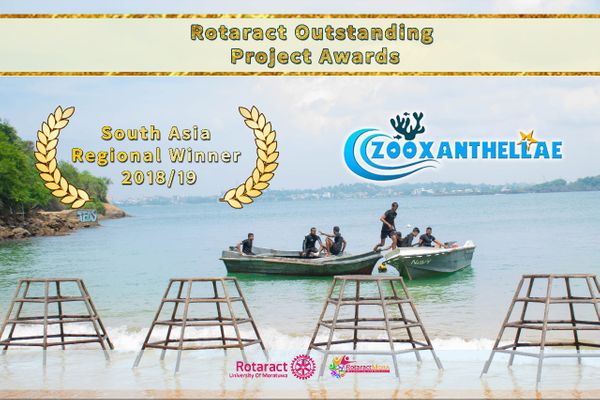Zooxanthellae 2021
Colouring The Sea Floor
Pressed with other concerning issues which are closer to our lives, we tend to forget some of the most critical environmental issues which have a long-time impact. One of them is the problems concerning the global coral population. Coral reefs, the rainforests in the ocean, inhabit only tropical oceans like ours. Recently in the month of December 2021, a huge heatwave caused a massive coral bleaching event on the Great Barrier Reef, Australia. Not only the Great Barrier Reef but also almost every coral reef on the earth is in danger.
Why Protect Corals?
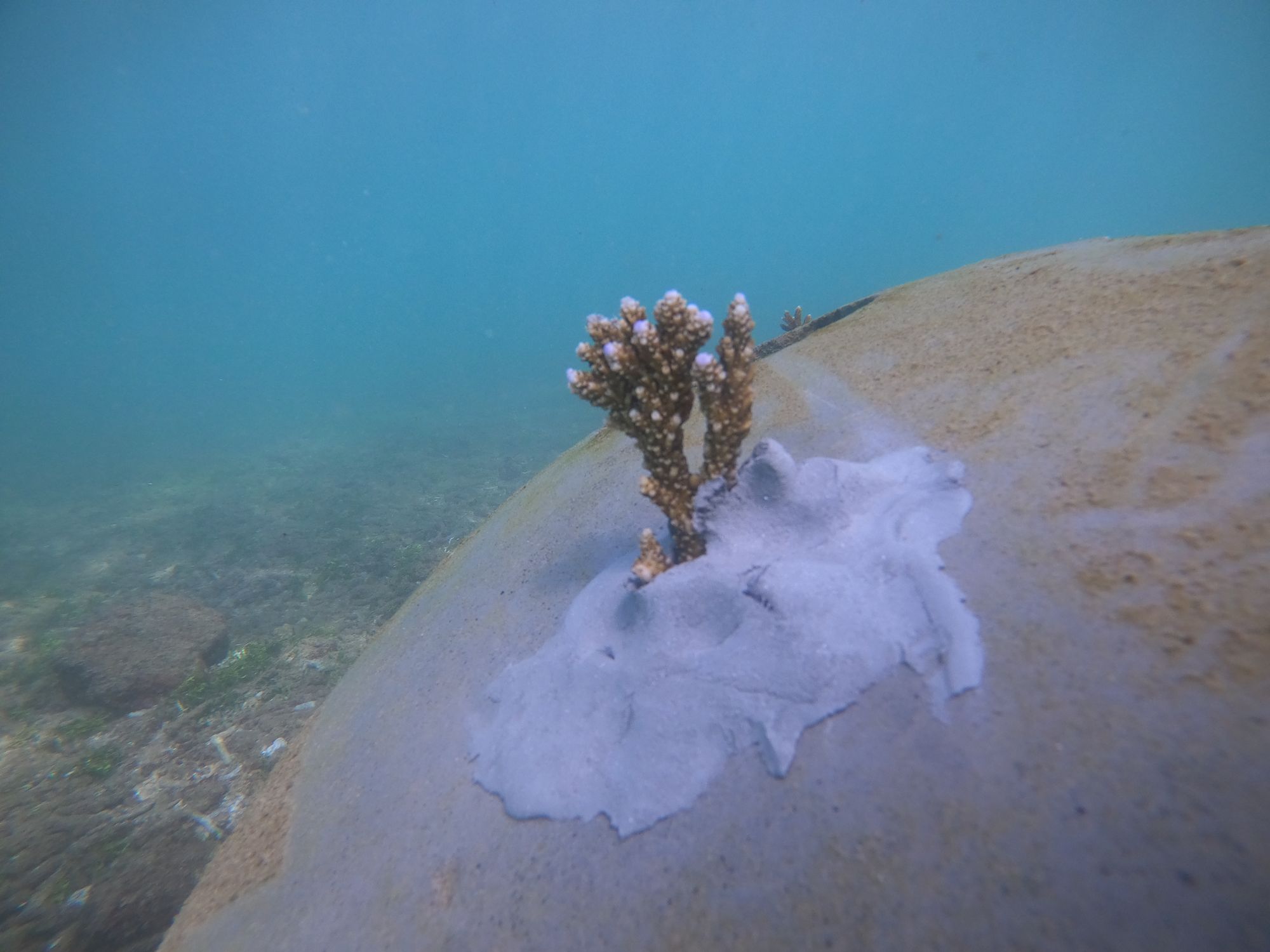
Some might ask because of the unseen benefits, why should we care about the coral reefs? Looking at some of the benefits, corals play a major role in the marine ecosystem. Even Though they cover only 1% of the sea floor, they give shelter to more than 25% of the entire marine creatures. That is about two million species that call the reefs their homes. They also help stabilize the marine ecosystem, help slow down the ocean waves which would otherwise erode the sandy beaches, and provide job opportunities to the local communities.
Concerning Sri Lanka …
Sri Lanka is an island that has a 1:8 land to ocean ratio giving us a lot of marine assets. And also as our country is located near the equator, the coral reefs are abundant in the Jaffna peninsula along the Gulf of Mannar, Negombo, Hikkaduwa, Galle, Matara, Kirinda(Great basses reef, and little basses reef), Passekudah to Trincomalee. Most of these coral reefs are in danger because of a wide range of threats including global warming, illegal coral harvesting for ornaments and building materials, unsustainable fishing techniques, Pollutants entering the ocean, and unsustainable tourism.
Zooxanthellae First Chapter.
One day Rtr. Sahan Jayawardana, an Engineering undergraduate specialising in Earth Resources Engineering at University of Moratuwa was in a lecture when Professor Nalin Ratnayake suggested that planting baby corals on the sea bed, mounted on the structures was a potential way of rehabilitating the coral colonies. With a spark of inspiration from this idea, this undergraduate puts forward it as a Rotaract project under the Environmental Services Avenue of Rotaract Club of University of Moratuwa during the Rotaract year 2016/2017. The name of the project, ‘Zooxanthellae’ was proposed as they were the photosynthetic algae living in the coral’s surface layer giving corals life.
At that time, planting baby corals was relatively a new idea in Sri Lanka and had to undergo close scrutiny on a lot of factors before implementation. After about 3 years from the initial idea, the first deposition of the baby corals mounted on specially designed 10 steel structures, was accomplished in Jungle beach, Rumassala on the 2nd of November 2018. The first chapter of Zooxanthellae became the South Asia Regional Winner in Rotaract Outstanding Project Awards 2018/19 and was selected as a Rotaract Outstanding Project Award Finalist for the year 2018/19 out of 558 nominations from all around the world triumphing the glory beyond Sri Lanka.
Moving To The Second Chapter…

During a time when the Rotaract Club of University of Moratuwa, the first university-based Rotaract club in Sri Lanka, was celebrating its 25th Anniversary, the second chapter of the Zooxanthellae was initiated in 2021 with a great deal of experience, the huge success and reputation gained from the 1st chapter.
With Great Partnerships…
This time the project was to be conducted in two phases. In the 1st phase, 20 structures were to be deployed and another set of structures was to be deployed after assessing the 1st deployment. As this was a massive project, substantial financial support was needed. So as a global corporation, leading the world sustainably, the Mitsubishi Corporation joined hands with the project Zooxanthellae, giving the project huge potential. Planting baby corals is not an easy task. We cannot go out in the sea, pick the corals and plant them on the structures without having the knowledge and resources. So, the Marine Environment Protection Authority (MEPA) partnered with Zooxanthellae, giving tremendous guidance throughout the project.
Mirissa Beach, The Chosen Place…
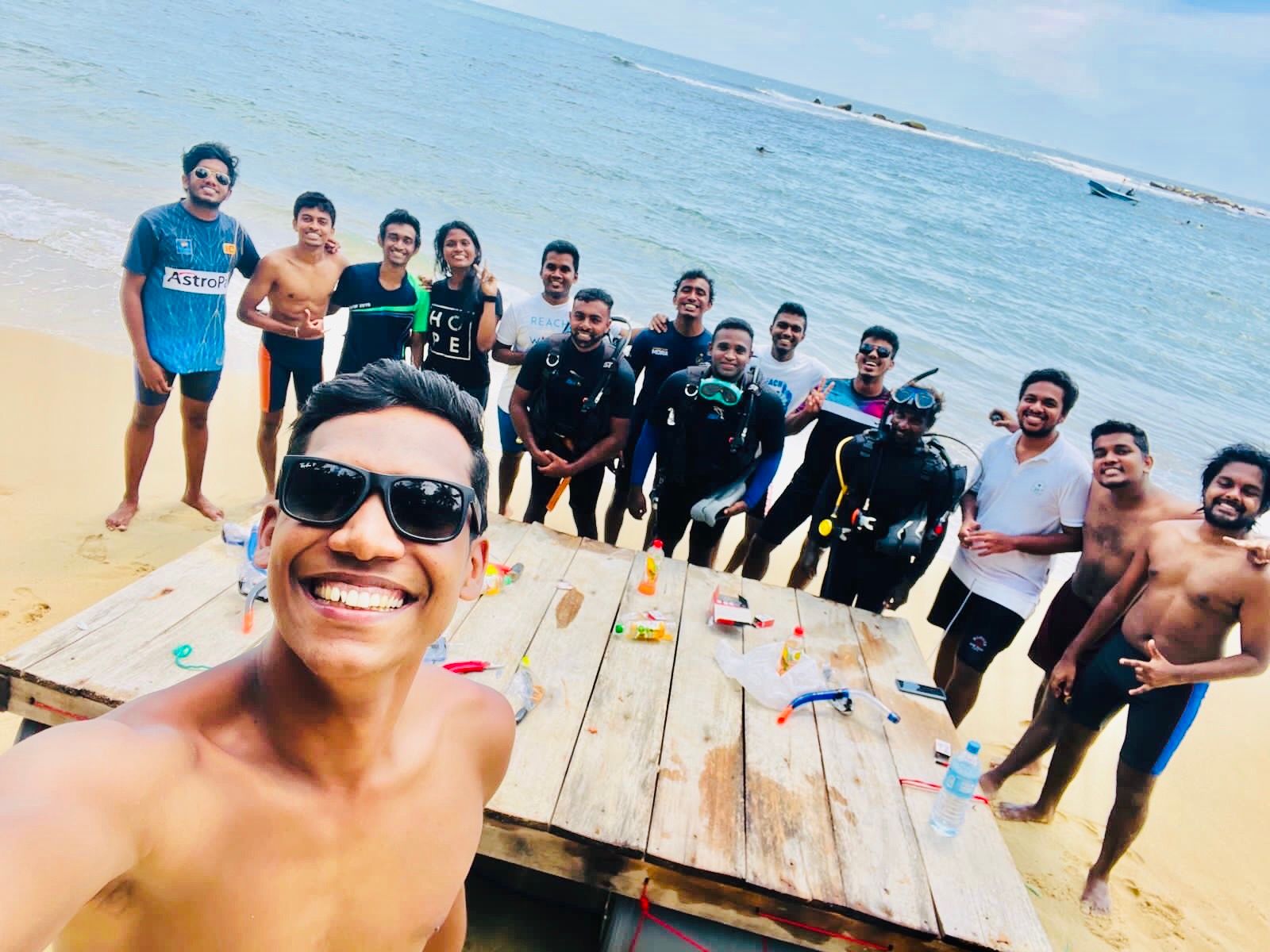
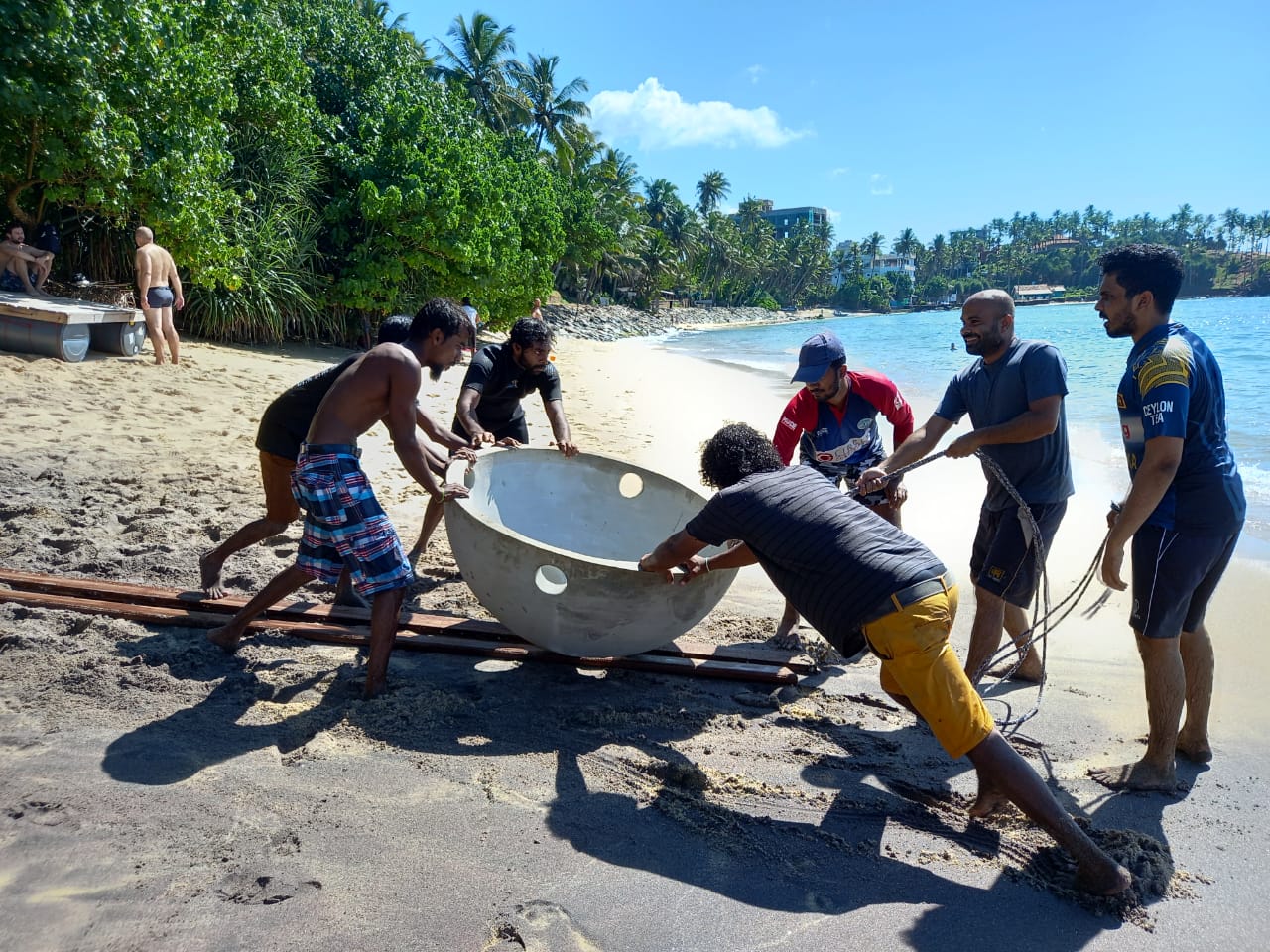
After evaluating several factors by a senior scientist at the MEPA, and the head of the project - Mr. Sandun Wickramasinghe, and a junior scientist at Ocean University Mr.Nadun Nayantha, it was decided that the deposition would be done in the shallow water near the Mirissa beach, Matara. As another coral planting project was done closer to Mirissa beach by the MEPA, they had the water quality samples tested already and other essential factors tested which are crucial for the nourishment of the budding corals, driving the project quickly.
There are a lot of coral reefs that reside near the coastal areas of the Matara district such as Madiha, Polhena, Nilwela, and Dondra Head. The shallow ocean area near Mirissa beach is also such a place. In the 2004 Tsunami, the Mirissa beach was protected because of the reef located close by. And also these coral reefs play a major role in driving the fisheries and the tourism industry in the area. So planting baby corals in such a needy area has a massive socio-economic impact.
Baby Corals On Concrete Boulders…
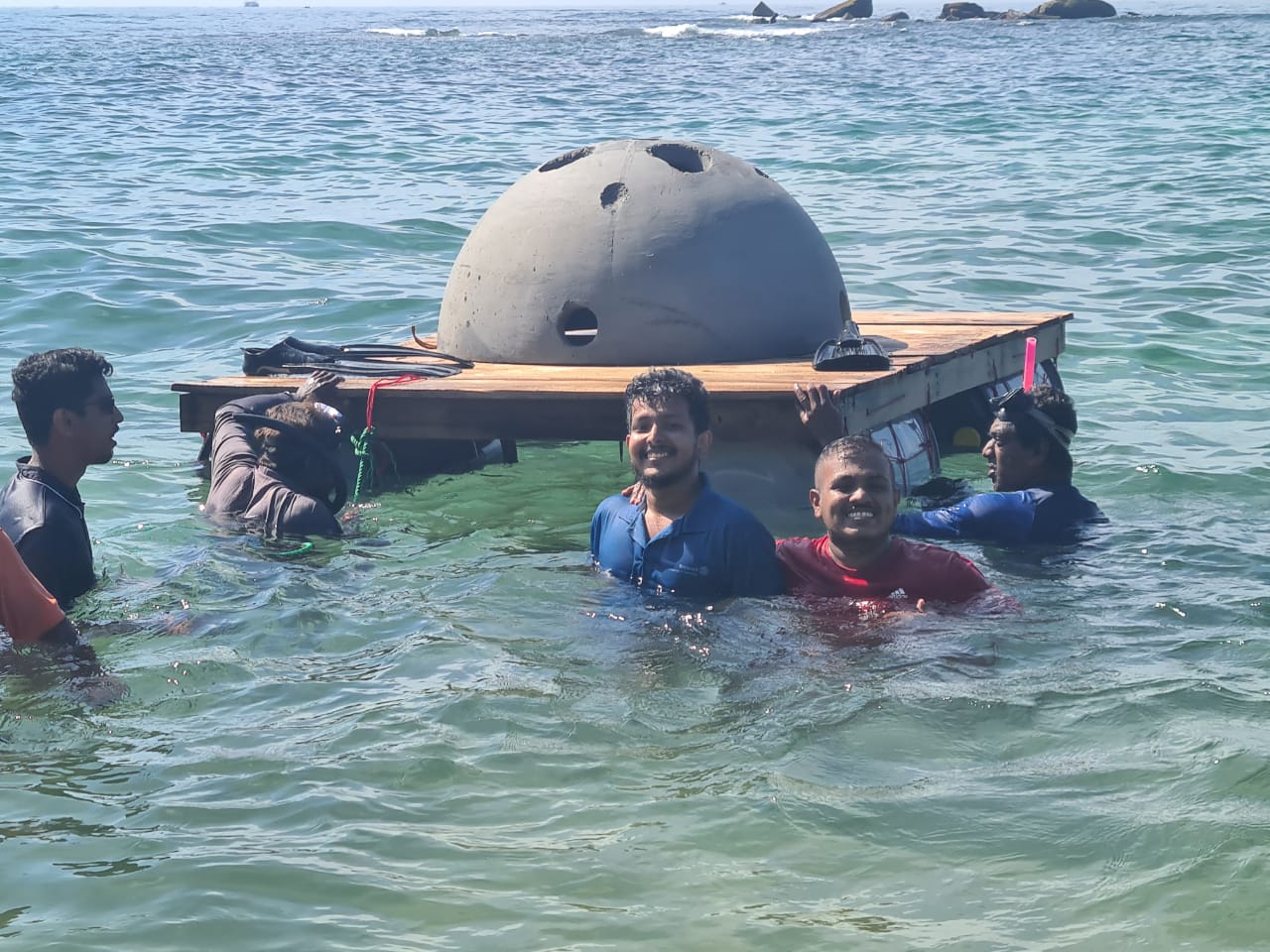
It was decided that 20 concrete boulders designed by Zooxanthellae 20/21 team and developed by Dr. Sumudu Herath, Lecturer of Civil Engineering at University of Moratuwa would be deposited under the sea bed. The structure material was changed from steel, which was used in the previous chapter, to concrete because of several reasons. As concrete has a greater surface area it provides much space for the corals to grow and prosper. Also as the concrete contains Calcium Carbonate (CaCO3), a key constituent of the coral reefs, it takes considerably less time for the baby corals to bind with the structure. And also concrete structures are much more stable than steel ones.
The procedure was to carry all the concrete boulders to the deposition site and deposit them underwater first. Then the specialists would attach the live baby corals to the structures using epoxy glue.
The deployment of the structures in the first phase was done recently on 6,7 and 8th January 2022 with the help of Rotaractors and marine scientists from the MEPA. After deploying the concrete boulders, the transplantation of the baby corals on those structures was done on the 11, 12, and 13th of January 2022. It is also vital to inform the locals who are direct beneficiaries of the project about the corals and how to conserve them as it is their responsibility to protect the planted baby corals in the long run. So, an awareness session was conducted with the locals at the Bandaramulla Temple, Mirissa.
Hope For The Second Phase…

After the successful deployment of 20 concrete boulders on the sea bed, MEPA is conducting a series of feedback visits to the deployment sites now and evaluating the status of the budding corals. Then after getting enough feedback from the 1st phase, the 2nd phase will be implemented.
Towards Sustainability…

During a time when the whole coral population is in danger worldwide, this project aims to plant baby corals in potential areas. Especially in the southern region of Sri Lanka where there is a considerable amount of people who depend on fisheries and tourism. Planting baby corals in such areas helps to increase the fish population, raising the local fishing industry. The tourism industry also depends on coral reefs. Activities such as shallow water snorkeling, deep water diving near coral reefs are popular tourist activities among both local and foreign tourists. Also, this project's motives are to make society aware of the importance of the coral reefs and push forward society to conserve them in various ways. One of the most important things accomplished in the project is the partnership with the corporate sector towards sustainability.
Every project carries its own challenges. Especially pioneering, novel projects like Zooxanthellae carry even more. Without the partners, the Mitsubishi Corporation and the MEPA such a massive project like this would never be a success. Especially sincere thanks go to the Matara district marine environment officer, chief marine environmental scientist, and the head of the project - Mr. Sandun Wickramasinghe, Junior scientist at Ocean University Mr. Nadun Nayantha, and each and every Rotarian, Rotaractor, Interactor, and other people who participated and contributed to the project to make it a success.
Let’s Protect the Coral Reefs…
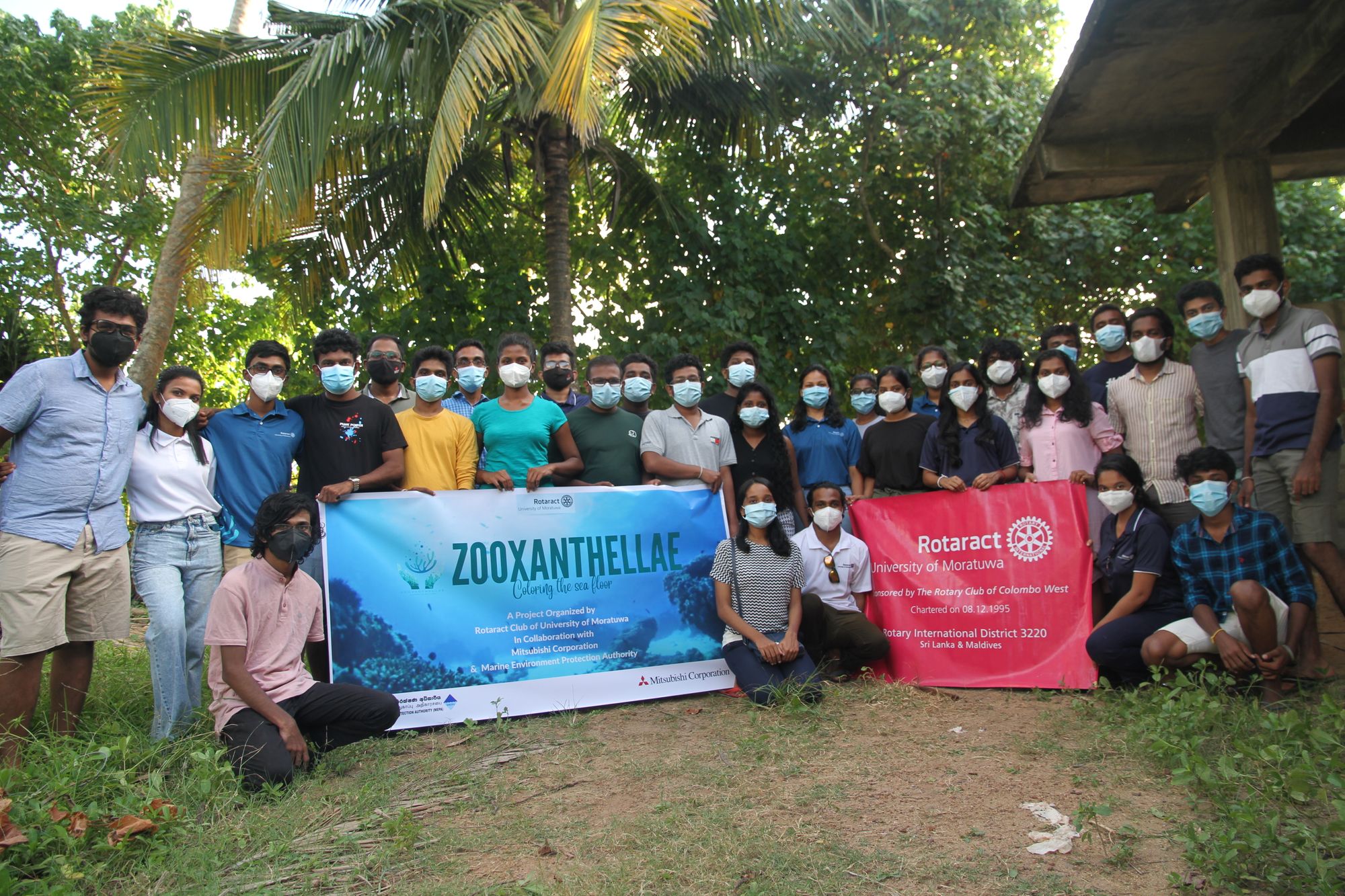
As an island nation, we all have the responsibility to protect our marine resources on behalf of future generations. So get together as a nation and do your bit. This project “Zooxanthellae” will be an inspiration for such efforts!
References:
Great Barrier Reef on verge of another mass bleaching after highest temperatures on record | Great Barrier Reef | The Guardian. (28 January, 2022). Retrieved February 2, 2022, from https://www.theguardian.com/environment/2022/jan/29/great-barrier-reef-on-verge-of-another-mass-bleaching-after-highest-temperatures-on-record
Sri Lanka’s Amazing Maritime | Corals. (n.d.). Retrieved February 2, 2022, from https://www.slam.lk/corals
Project Report - Zooxanthellae - 2018


